# 第三章 我的管理原則
## Part 3: My Management Principles
第三章:我的管理原則
In Part 1 I explained why I believe having principles is important and that I believe that it is up to each person to decide what principles are best for them. In Part 2 I explained my most fundamental principles. In this part I explain my management principles. Naturally, my management principles reflect the principles I believe are best throughout my life. But before I get into my particular management principles, I’d like to touch on management principles in general.
在第一章中,我詳述了具備原則的重要性,每個人要自己決定最適合自己的原則。第二章我詳述了對我來說最重要的根本原則。本章將詳述我的管理原則。實際上我的管理原則反映出了我一生中最堅信的一些原則。在開展論述之前,我先大概談談管理原則。
If you read any of the earlier parts you know that I believe that having principles is essential for getting what you want out of life. That is as true for groups of people (e.g., companies, schools, governments, foundations, etc.) as it is for individuals. While individuals operating individually can choose whatever values and principles they like, when working in a group the people must agree on the group’s values and principles. If the group is not clear about them, confusion and eventually gravitation toward the population’s averages will result. If the group’s values and principles are clear, their way of being (i.e., their culture) will permeate everything they do. It will drive how the people in the group set goals, identify problems, diagnose problems, design solutions and make sure that these designs are implemented. So I believe this relationship looks like this:
你要是讀了前面兩章就會明白,我認為要實現夢想,具備原則極其重要,不僅是個人,對于團隊來說也是如此,包括公司、學校、政府、基金會等。個人在做抉擇時能根據自身喜好選擇價值觀和原則,但在團隊里工作則要認同團隊的價值觀和原則。如果一個團隊對其價值觀和原則不夠清晰明朗,隨之帶來的后果終會落到每個成員身上。團隊的價值觀和原則一旦清晰明了,團隊的工作方式(也就是團隊文化)將滲透于團隊的方方面面,包括如何制定目標、發現問題、診斷問題、設計解決方案、落實方案。我認為團隊里關系應該是這樣的:

While having a clearly conveyed **great culture** is important, that’s only half of the magic formula. The other half is having **great people**—i.e., people who have the values, abilities, skills that fit the organization’s culture.
清晰傳遞團隊的**良好文化**非常重要,但這只是“魔法公式”的一半,另一半是**優秀的員工**,他們的價值觀、能力、技能都和公司文化相得益彰。
In other words, I believe that to have a great company you have to make two things great — the **culture** and the **people**. If these two things are great your organization can navigate the twists and turns to get you where you want to go.
也就是說,要想讓公司強大起來,你得有兩樣拿得出手的利器 —— 公司文化和員工,這兩樣東西足夠強大,遇到什么問題都能迎刃化解,助你實現夢想。
Of course, you have to know where you want to go. Organizations, like individuals, have to choose what they are going after (i.e., their goals), which influences their directions. As they move toward their goals, they encounter problems, make mistakes and discover weaknesses. Above all else, how they choose to approach these impediments determines how fast they move toward their goals.
當然,你得清楚前進的方向,組織和個體一樣,要選擇追逐什么,即目標是什么,這會影響到公司發展的方向。在追逐目標的征途中,會遇到問題,犯錯,發現缺點。選擇何種方式應對這些困難,決定著我們實現夢想的速度。
Every organization works like a machine to achieve its goals. This machine produces outcomes. By comparing the outcomes to the goals, those running the machine can see how well the machine is working. This is the **feedback loop** that those who are responsible for the machine need to run well in order to improve the machine. Based on the feedback, the machine can be adjusted to improve. The machine consists of two big parts—the **culture** and the **people**. If the outcomes are inconsistent with the goals, something must be wrong with the machine, which means that something must be wrong with the culture and/or the people. By diagnosing what is wrong, designing improvements and implementing those improvements, the machine will evolve. In short, the evolutionary process is as follows. Take a minute to look it over and see what you think.
每個公司機構都像一臺機器,為了實現目標而運行著,這臺機器會產生結果。將目標和結果進行對比,機器的操作者可以了解機器的運行狀態,機器的負責人要把這種**反饋循環**利用好,才能更好地提升機器的性能。基于反饋,這臺機器才能調整與提升。這臺機器由兩塊組成 —— **文化**與**員工**。如果結果與目標不符,那機器肯定出問題了,也就是文化和員工出問題了。要讓這臺機器發展延續下去,就得診斷問題,設計改進方案,落實改進措施。簡而言之,這個不斷進化的過程如下圖所示,花一分鐘好好看看,自己思考一下。
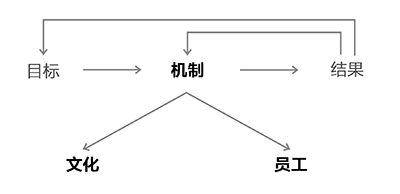
The more frequently and effectively those in the machine go through this process, the more rapidly they and the machine will evolve. An effective evolutionary process looks like this—i.e., lots of quality feedback loops produces a steep upward trajectory.
在這臺機器里,這樣的過程運行得越多越有效率,進化的速度就越快。有效率的進化過程如下圖所示:大量有質量的反饋回路產出一條曲折上升的軌跡線。
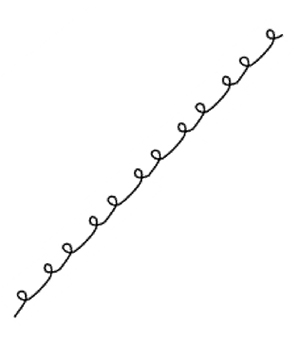
An ineffective evolutionary process—i.e., one in which mistakes are infrequently looked at and weaknesses are not well identified—looks like that shown below, i.e., fewer and/or less effective feedback loops produces a slower upward trajectory. In fact, if there are two few and/or bad quality feedback loops, there will be a decline because you won’t identify and deal with the problems that will kill you.
在效率低下的進化過程中,人們很少審視錯誤,鑒別缺點,如下圖所示,量少且低效的反饋回路構成了上升緩慢的軌跡線。事實上,如果存在兩次量少質差的反饋回路,軌跡曲線就會轉走下降趨勢,因為沒有發現錯誤,無法解決某些致命的問題。

I believe that this is equally true for individuals and organizations. I also believe that the most important difference between great organizations and bad ones is in how well they manage their feedback loops.
人與組織均適用此原理,成功的組織脫穎而出就在于他們能完美地處理好反饋回路。
### Bridgewater’s Culture and People
橋水聯合基金的公司文化和員工
Naturally, the culture and people that I have chosen for Bridgewater are extensions the principles that I believe work best, which I explained in Part 2\. Most importantly I value meaningful work and meaningful relationships that are obtained by striving for truth and excellence with great people. I am confident that through this constant striving, we will evolve rapidly together.
事實上,在創造橋水聯合基金公司文化與聘用員工時,我遵循的管理原則是我認為最有效的原則的拓展,這些原則我在第二章已經詳述。最重要的是,我很重視在追求真理與卓越的過程中,完成有意義的工作,與值得打交道的人建立關系。我堅信,只要這樣不斷奮進,我們定能實現快速進化。
As you might have guessed from reading Part 2, I want Bridgewater to be a company in which peoplecollectively…
如果你已閱讀第二章,就應該能猜到,我心目中橋水聯合基金的員工應都具備什么素質:
**…1) work for what they want and not for what others want of them.**
**…1) 干自己真正想做的事情,而非他人逼迫為之**
**…2) come up with the best independent opinions they can muster to move toward their goals,**
**…2) 達成最好的獨立觀點,用以實現目標。**
**…3) stress-test their opinions by having the smartest people they can find to challenge them so they can find out where they are wrong,**
**…3) 對自己的觀點進行壓力測試,把身邊最聰明的人找來挑毛病,找出觀點中錯誤的地方。**
**…4) are wary about overconfidence, and good at not knowing**
**…4) 不能太過自信,并善于面對“不知”。**
**…5) wrestle with reality, experiencing the results of their decisions, and reflecting on what they did to produce them so that they can improve.**
**…5) 同現實展開斗爭,反思為什么他們的決定會產生這種結果,從中學習與提高。**
And when faced with difficult choices, I want them to see the choices as follows.
遇到棘手選擇時,可參考如下選項:
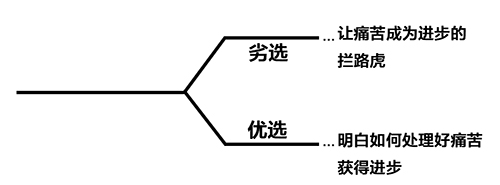
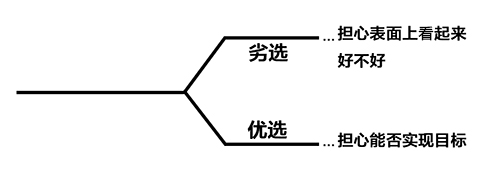
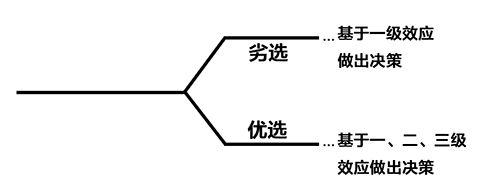
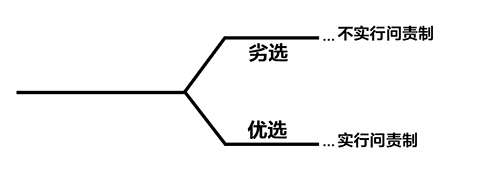
While I recognize that being this way is challenging, I am also confident that it is what is required to get the most out of out of life. I am confident for two reasons. First, it is logical that the cause-effect relationships are such that being this way produces good results. Second, this theory has been tested over the last 40 years and has worked. While 40 years ago being this way seemed logical, back then that was an untested theory. Now that we have 40 years of testing to look back on, we can see that the results verify the theory.
盡管我知道這種管理方式很具有挑戰性,但我堅信這是實現成功的必備條件。我對此深信不疑是基于兩點。第一,基于原因-結果的邏輯關系,這樣的管理方式會帶來滿意結果;第二,40多年的公司管理表明,這套理論是行之有效的。我們現在回顧這40多年來走過的歷程,最后的結果也證明,這套理論經受住了檢驗。
### Fleshing Out This Way of Being
管理原則的具體內容
The best advice I can give you is to ask yourself what do you want, then ask ‘what is true’—and then ask yourself ‘what should be done about it.’ I believe that if you do this you will move much faster towards what you want to get out of life than if you don’t!
我能給你的最好建議就是,問問自己想要什么,“真實情況是什么?”,“應該對此做些什么?”我相信只要按此步驟,就能更快實現夢想。
Because what I have said is pretty abstract, I need to spell out exactly what it means to run a company this way. I need to get very specific. Over time I have built a collection of principles that because I have collected and refined so many over time. I believe that virtually all problems you might encounter are addressed by one or more of the principles that follow.
我之前談的都很抽象,所以下面我會說說在管理公司時的具體原則,所談的內容非常具體。這些年來,我總結了一套包羅萬象、歷經大浪淘沙的管理原則,相信你遇到的問題都能從中獲得解答。
There are too many to read as a book. What follows is not a few rules to go by presented in an easily digestible form that’s easy to remember. That wouldn’t have been specific enough to be of much help to you. There are over 200 principles here that are well explained and are meant to be used more as a reference book than a book that is read from cover to cover.
一本書的內容有限,總該有其核心要旨。下面將列出一系列具體原則,便于理解與識記,內容非常具體,對你大有幫助。詳述了200多條原則,這些原則也表明本書不是單純意義上的參考書,因為這些原則是能運用到實際工作中的。
I’ve created an outline that serves the purposes of being both a summary of my management principles and a table of contents for a more complete explanation of them. Said differently, these principles are presented in a big picture way in this Summary and Table of Principles and in a more thoroughly explained way in the section that follows. If you want to understand the principles in brief, just read what’s said in the summary below and if you want to delve into them, go to the individual principles after the outline.
下文是原則綱要,既是我管理原則的匯總,也是后續原則詳述的目錄。換句話說,原則匯總列表提供了這些原則的總體概覽,后續部分則是每條原則的詳述闡釋。若你想簡要了解這些原則,閱讀下文原則匯總列表即可,如果想深入理解,可閱讀匯總表后面每條原則的詳述部分。
